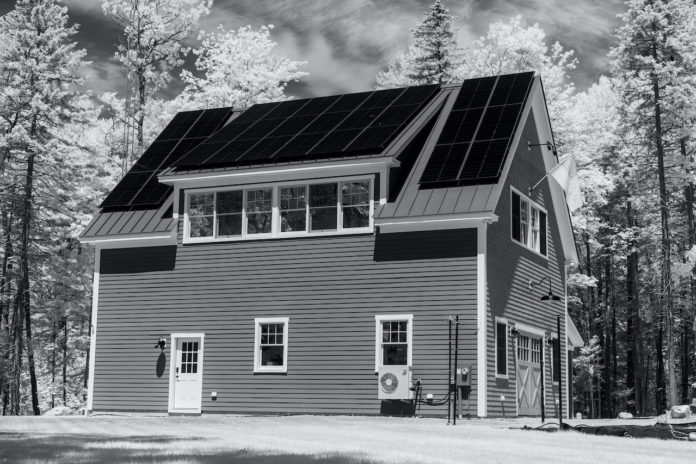Net Zero and Passive House are two sustainable building standards that strive to reduce buildings’ environmental effects. What are the distinctions and similarities between net-zero and passive houses? Let us investigate.
What is a Net Zero House?
A net-zero energy house generates as much energy as it uses in a year. This indicates that the structure generates enough renewable energy from solar panels to cover its yearly energy demands for heating, cooling, hot water, lighting, and other energy-related activities.
A net-zero energy home is built to be highly energy-efficient, with insulation, efficient windows, and other energy-saving technology used to reduce energy waste.
The purpose of a net-zero energy home is to utilize non-renewable energy sources as little as possible, to reduce greenhouse gas emissions, and to provide a more sustainable and cost-effective solution for heating and cooling.
It’s important to note that a net-zero energy home can still be linked to the power grid and take energy from it. Still, the objective is to create as much energy as it uses yearly, resulting in a net energy balance of zero.
What is a Passive House?
A passive house is a construction standard that uses very little energy for heating and cooling. Passive house design aims to produce a comfortable indoor atmosphere that relies on standard heating and cooling equipment as little as possible.
Passive homes are airtight, well-insulated, and situated to maximize natural light and solar heat gain. To keep a steady inside temperature, they employ high-performance windows and doors and effective ventilation systems.
Compared to a typical structure, the passive home standard attempts to minimize energy usage by up to 90%. This is accomplished using good insulation, airtight construction, and energy-efficient heating and cooling systems.
What are the Differences between Net Zero and Passive House?
A net-zero energy home and a passive house are similar in that both seek to reduce energy use and reliance on traditional heating and cooling systems. However, there are several significant distinctions between the two concepts:
- Energy production: A net-zero energy house produces as much energy as it uses in a year. On the other hand, a passive dwelling reduces energy use but does not necessarily create its own.
- Energy efficiency: A passive house is meant to be extremely energy-efficient, with adequate insulation, efficient windows, and other energy-saving measures to decrease energy waste. A net-zero energy house includes these elements as well. Still, because it must generate its own energy, it must be even more energy-efficient to meet the net-zero objective.
- Heating and cooling: To maintain a pleasant inside temperature, a passive house relies primarily on passive solar architecture and adequate insulation, with little dependence on typical heating and cooling equipment. To satisfy its heating and cooling demands, a net-zero energy home may employ a combination of passive design and renewable energy technology.
What are the Similarities between Net Zero and Passive House?
There are various parallels between net-zero energy homes and passive houses, including:
- Energy efficiency: Both net-zero energy homes and passive houses strive to be highly energy-efficient, limiting energy waste and utilizing traditional heating and cooling systems.
- Reduced reliance on non-renewable energy: Both concepts aim to lessen dependence on non-renewable energy sources while lowering greenhouse gas emissions.
- Comfort: Both homes strive to create a comfortable interior atmosphere with consistent temperatures and acceptable indoor air quality.
- Sustainability: Net-zero energy homes and passive houses promote sustainability, offering a more ecologically friendly and cost-effective heating and cooling option.
- Design focus: To decrease energy waste and improve the interior environment, both approaches focus on appropriate design and construction methods, such as adequate insulation, efficient windows and doors, and airtight construction.
In summary, net-zero energy homes and passive houses seek to reduce energy consumption, rely less on non-renewable energy, create a comfortable indoor atmosphere, and promote sustainability.



